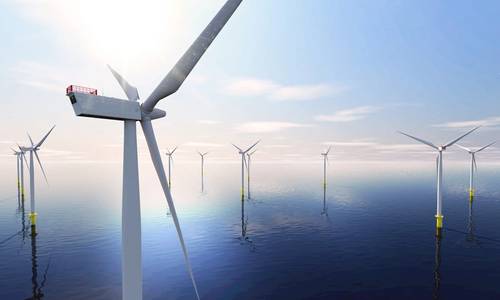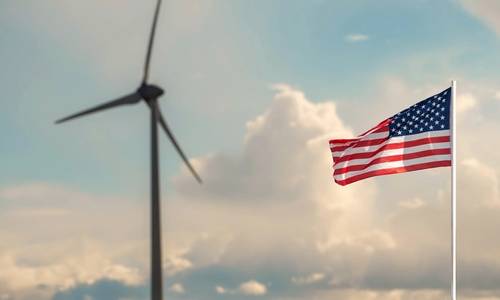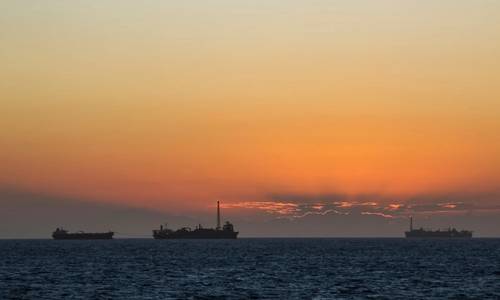Floating Power Plants: Is Nuclear the Key in the Net-zero Energy Transition?
Philip Lewis
February 14, 2022

Floating nuclear power plants (FNPPs) may not immediately spring to mind as providing a solution to several of today’s key global challenges – but FNPP development is emerging as a means of decentralized stand-alone production of cost competitive hydrogen-based fuels and clean electricity and water, according to a new report by Intelatus Global Partners.
The commercial case for deployment of FNPPs featuring small modular reactors is founded in the growing demand for hydrogen and hydrogen-based fuels.
Around 90 million tonnes of hydrogen is currently produced annually – almost exclusively produced from fossil fuels. Non-fossil fuel hydrogen production currently stands at around 0.5 million tonnes of annual capacity. The International Energy Agency calls for 80 million tonnes of clean hydrogen production by 2030. If this clean hydrogen target is to be met, green hydrogen produced by renewable solar and wind energy projects cannot meet all the energy requirements. Nuclear power will also be needed to produce low and zero carbon transition fuels.
The high temperatures generated by some reactor technologies are particularly well suited to clean hydrogen production, splitting water into component hydrogen and oxygen elements. Hydrogen produced by nuclear power is referred to as pink hydrogen – and sometime alternatively as purple, red or yellow hydrogen.
Given the storage challenges associated with hydrogen, FNPPs producing hydrogen from desalinated seawater can also produce more easily storable transition fuels, such as ammonia and methanol.
In a similar concept to floating oil production, storage and offloading units and floating natural gas liquefaction and regassification systems, a floating nuclear ammonia or methanol production, storage and offloading unit will process seawater to produce hydrogen which is then combined with nitrogen separated from the air to produce ammonia or captured carbon to produce methanol. The produced ammonia or methanol are stored in tanks in the hull spaces of the floating units and then later offloaded to shuttle tankers. These low and zero carbon fuels can be used in the maritime and aviation sectors amongst others.
The need for FNPPs for decentralized power and water production
Global population is forecast to grow to 9.7 billion by 2050 from around 7.8 billion people today – of which over 770 million have no access to electricity. Further, over 60 million people live in small developing island states, which face unique challenges for power and water supply.
Until now, those in remote and island locations have often relied on diesel generators to generate power, which is relatively costly and has negative impacts on the environment. Decentralized stand-alone power and mini grids, such as FNPPs, are one potential solution to deliver clean electricity to millions.
One advantage of nuclear power plants is that they produce large amounts of heat – which can be used for water desalination. Almost a third of the world’s population is estimated to have poor access to clean water and UNESCO forecasts that up to 5.7 billion people could be facing “some level of water scarcity” by 2050. The electricity and heat cogeneration capabilities of FNPPs make them ideal for providing decentralized water production from seawater, whether by thermal distillation or reverse osmosis.
 Undated image of STURGIS operating in the Panama Canal Zone. The STURGIS, a former World War II Liberty Ship, was converted into the first floating nuclear power plant in the 1960s. Before being shutdown in 1976, the STURGIS’ nuclear reactor, MH-1A, was used to generate electricity for military and civilian use in the Panama Canal. Photo courtesy U.S. Army Corp of Engineers
Undated image of STURGIS operating in the Panama Canal Zone. The STURGIS, a former World War II Liberty Ship, was converted into the first floating nuclear power plant in the 1960s. Before being shutdown in 1976, the STURGIS’ nuclear reactor, MH-1A, was used to generate electricity for military and civilian use in the Panama Canal. Photo courtesy U.S. Army Corp of Engineers
FNPPs: Not a new solution
Conventional floating power plants have been widely deployed as a source of flexible decentralized power for decades to remote and difficult to reach areas. There are currently more than 75 floating power plants operational today.
The world’s first nuclear powership used in a commercial application was the Sturgis. Operating between 1968 and 1976, the Sturgis supplied electricity to the Panama Canal Zone grid.
Building on its experience in building and operating nuclear powered icebreakers and cargo ships, FNPP pioneer Rosatom commenced operations of the world’s newest commercial floating nuclear power plant, the FNPP Akademik Lomosov, in 2020. The company is currently building four more next generation FNPPs. China, South Korea, Denmark, UK and the U.S. are all home to companies developing FNPP concepts.
New tech aims to address key concerns
Traditional site built nuclear power plants have a reputation for high costs and long construction schedules. A new generation of small and micro modular reactors seek to address these barriers.
Small in physical size, with an electrical output of less than 300 MW, the smaller footprints of these new generation reactors make them suited to decentralized marine based applications.
The modularized approach allows for economies of scale as these reactors will be built in series in controlled factory environments and be moved by road, rail or barge. Putting the nuclear plant on a floating structure allows power and heat to be deployed where it is needed. In the case of FNPPs, the reactor modules are moved to large and experienced shipyards.
In these offshore and marine yards, quality, safety, schedule and cost are readily controlled given that the plant’s construction and a large proportion of commissioning are performed using standardized equipment under strictly controlled conditions. This approach minimizes the risk of labor availability in remote areas and unforeseen ground conditions, two key risks for site-built power plants. At a high-level, the concept is similar to floating oil and natural gas production and storage units – another example where a mature technology, in this case oil & gas processing, has been coupled with mature offshore and marine supply chains and where there are more than 400 floating production and storage systems globally today.
High profile nuclear accidents from the past, such the 2011 Fukushima Daichi reactor meltdown in Japan, the 1986 Chernobyl accident in the Ukraine, and the 1979 Three Mile Island accident in the USA, fuel public concerns on nuclear power. Because of these risks, licensing of technology of projects is a long process.
The latest generation of reactors known as Gen-IV systems are designed to have very low likelihood and degree of reactor core damage and will eliminate the need for offshore emergency response. Gen-IV principles promote safety, reliability, sustainability, economics, and proliferation resistance – which support the licensing of technology.
One challenge of deploying conventional reactor technology, as used in the majority of existing onshore and naval nuclear power plants, is the need to refuel every 2-4 years. This will result in handling spent nuclear fuel in ports. Some of the developing small modular reactors feature technology that eliminate the need to fuel during the 20-30 year lifetime of the FNPP – mitigating many of the concerns and challenges to nuclear power.
The FNPP market report
Intelatus Global Partners has developed a toolbox that identifies and assesses future business opportunities in designing, building, operating, and financing FNPPs, specific locations that are prime targets for using an FNPP, barriers and hurdles to market entry and development, the players and competitive landscape and optional strategies and paths for entering and positioning in this emerging market.
For more information about the FNPP Market Report, please contact Philip Lewis @ philiplewis@intelatus.com.





